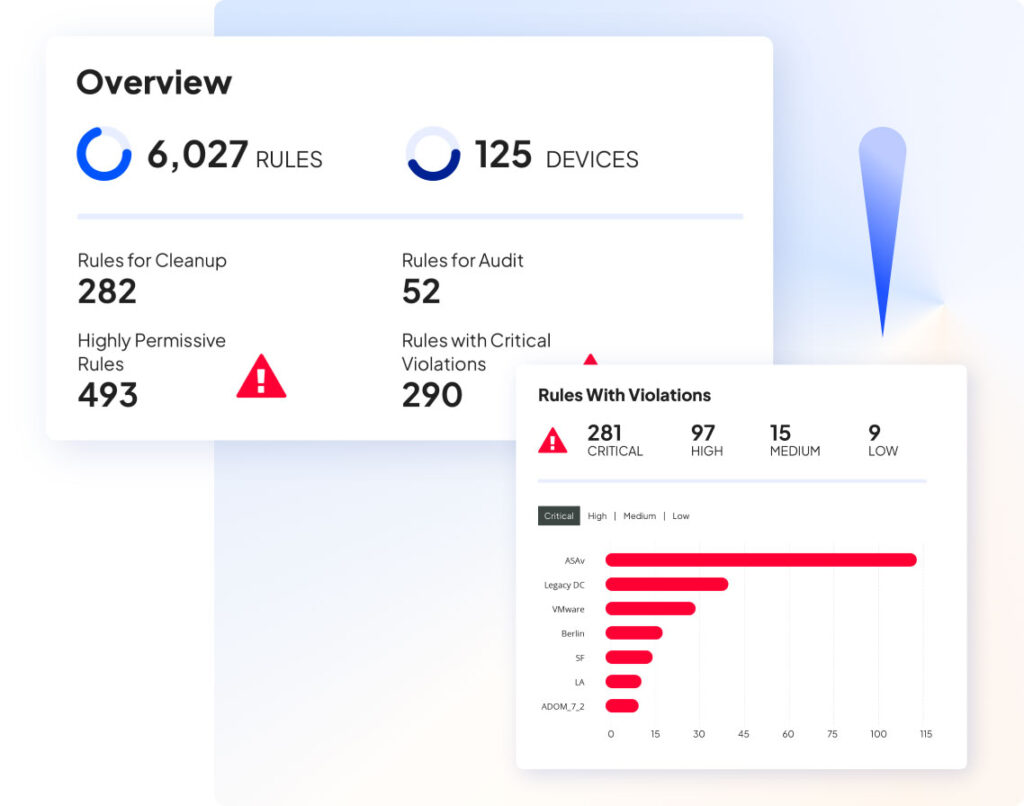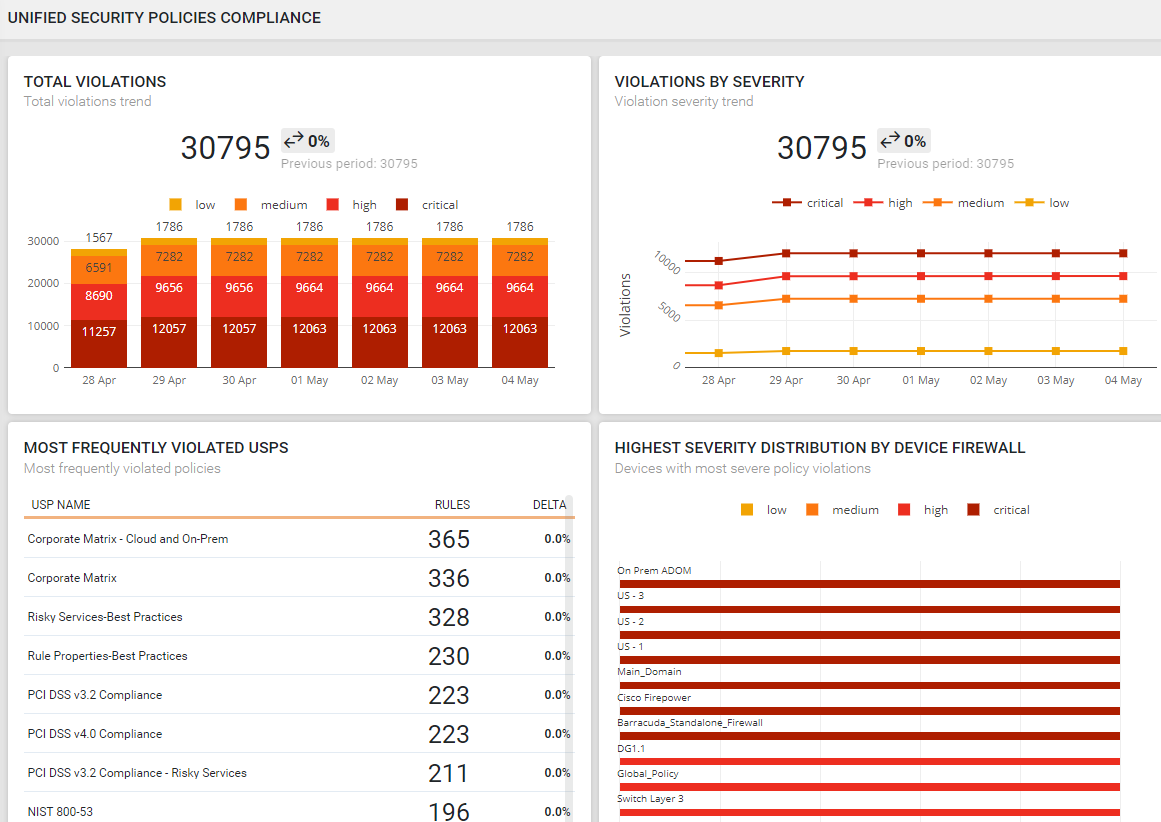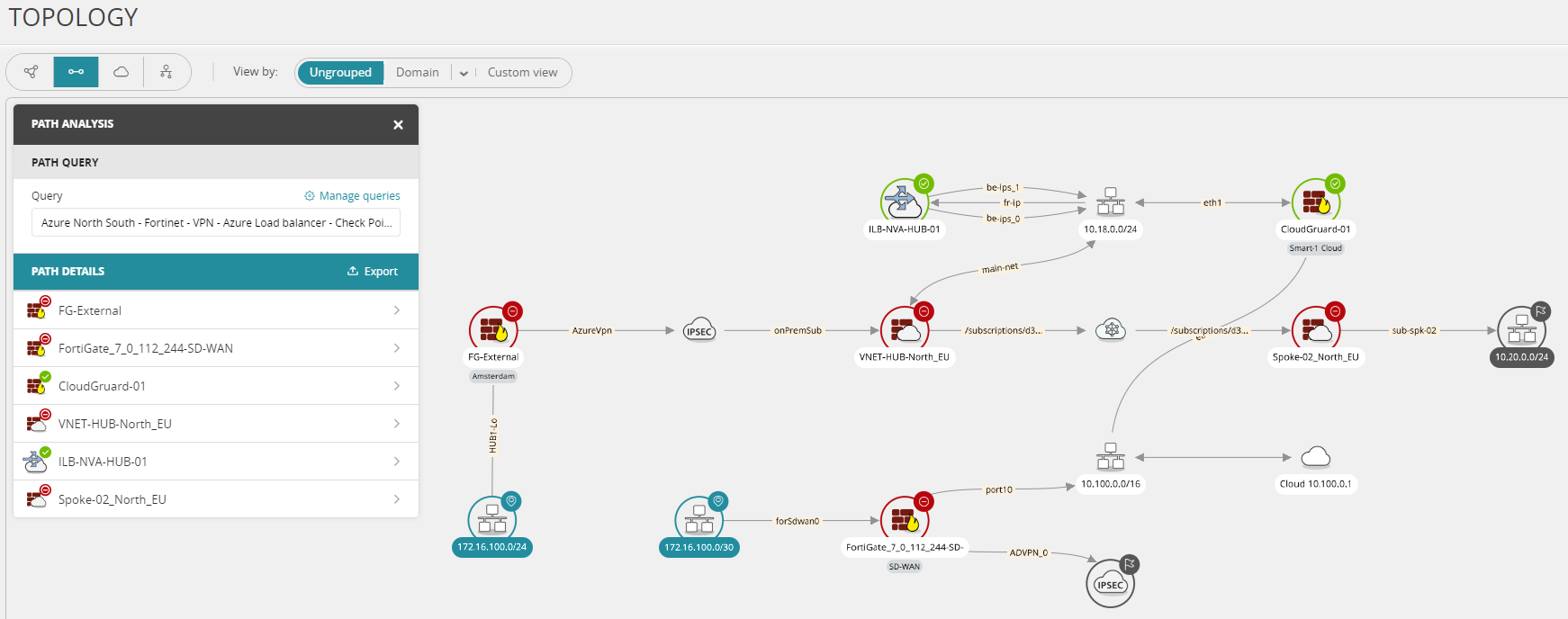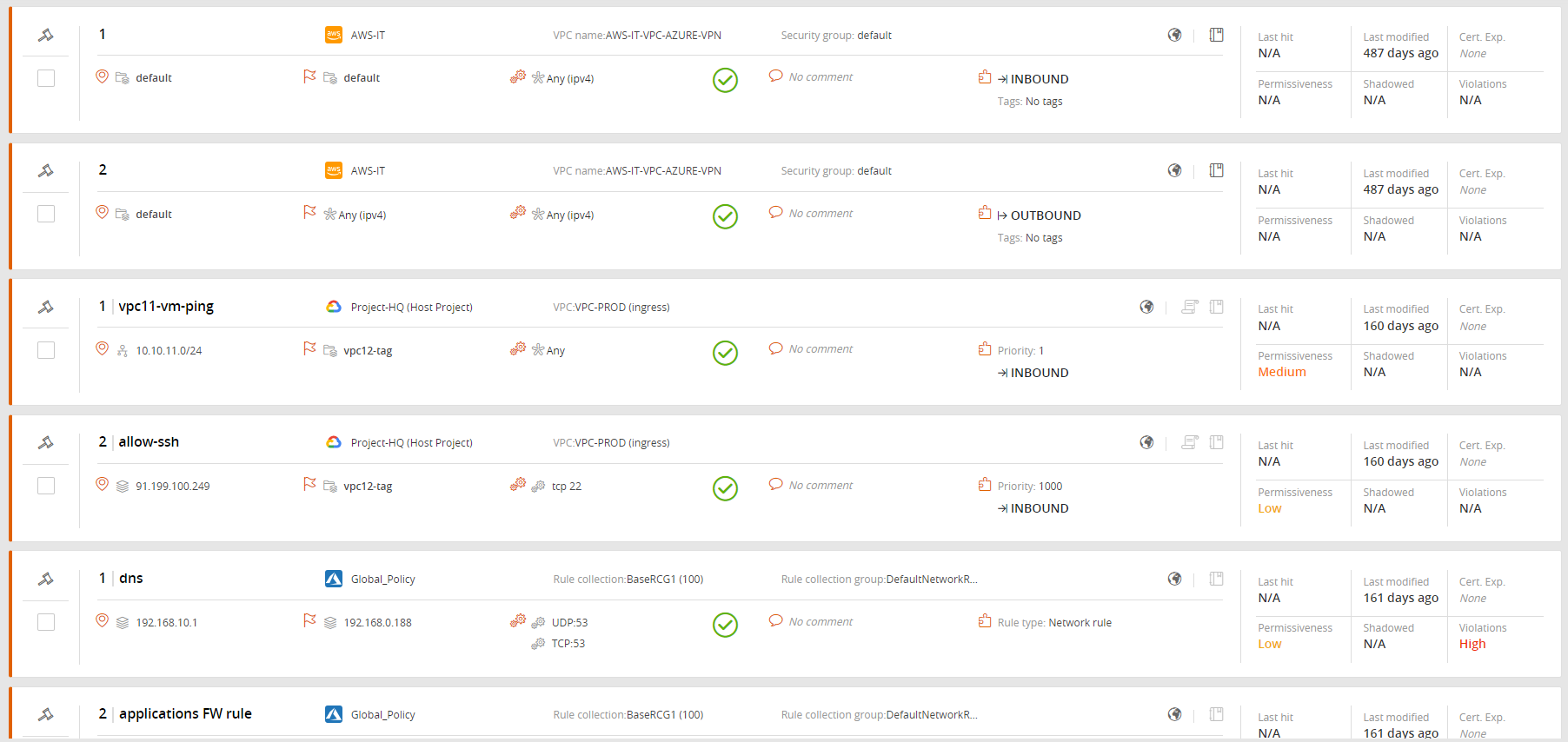
Cloud Network Convergence
Design, deploy, and automate network security policy across on-premises and public cloud environments. Gain end-to-end visibility into assets, services, and traffic in multi-cloud environments.
Cloud Network Convergence Use Cases

Streamline Cross-cloud Compliance Monitoring
Centralize cloud segmentation policy planning and management across public cloud and private cloud instances.
- Generate a side-by-side comparison and gain insight into all policy revisions across all monitored devices.
- Leverage a central console for monitoring, maintaining, and providing continuous compliance with industry regulations and internal policies across legacy firewalls, next-generation firewalls, SDN, SSE, and edge devices.
- Consolidate cloud-native firewall and on-premises firewall management.

Enhance Security with End-to-end Visibility
Gain real-time visibility into your assets, services, and North/South and East/West traffic across your multi-cloud architecture.
- See policy non-compliance in real time, and rapidly troubleshoot misconfigurations in multi-cloud environments that expose you to operational and cyber risk.
- Quickly build consistent policies that dictate North/South and East/West traffic within and among segments, then manage those policies automatically.
- Gain application-level and network-level visibility into the state and configuration of cloud-based firewalls and security groups.

Get the Benefits of Multi-cloud Faster
Spur your digital transformation journey with securely managed multi-cloud environments.
- Centralize and accelerate cloud segmentation planning and management.
- Achieve faster, safer workload connectivity and application delivery.
- Avoid vendor lock-in and simplify consistent management across cloud security solutions.
Get Started with Tufin
Contact our experts to learn more about pricing, receive a free network and firewall risk assessment, or schedule a demo.
Cloud Network Convergence Resources
Articles
- Cisco SASE Architecture: SD-WAN Meets Cloud Security
- Simplifying Network Complexity: Tufin R25-2 Expands the Unified Control Plane Across Your Hybrid Network
- SD-WAN vs. MPLS: Key Differences, Costs & Use Cases
- SD-WAN vs. VPN: Compare Security, Performance & Use Cases
- How SD-WAN Solves Network Challenges for Enterprises
Solutions
Transforming Network Security & Automation
Elevate your network security and cloud security operations with Tufin’s product tiers. Addressing the most challenging use cases, from segmentation insights to enterprise-wide orchestration and automation, experience a holistic approach to network security policy management.
SecureTrack+
Firewall & Security Policy Management
Drive your security policy journey with SecureTrack+
- Centralize network security policy management, risk mitigation and compliance monitoring across firewalls, NGFWs, routers, switches, SDN and hybrid cloud
- Automate policy optimization
- Prioritize and mitigate vulnerabilities
SecureChange+
Network Security Change Automation
Enhance your visibility and automate mundane tasks with SecureChange+
- Achieve continuous compliance
- Reduce network change SLAs by up to 90% with network change design and rule lifecycle management
- Identify risky attack vectors and detect lateral movement
- Troubleshoot connectivity issues across the hybrid cloud
Enterprise
Zero-Trust Network Security at Scale
Fortify your network security operations with Enterprise
- Achieve zero-touch automation through provisioning of network access changes
- Deploy apps faster through application connectivity management
- Minimize downtime and data loss with High Availability and built-in redundancy
